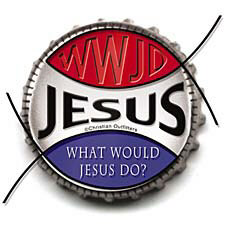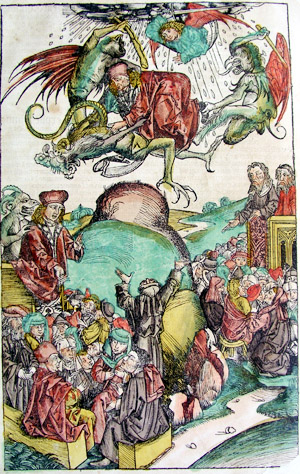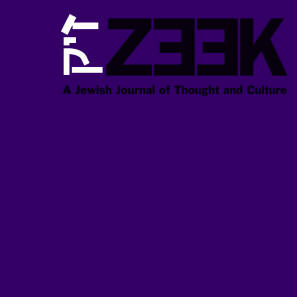 February 06
February 06
The Other Zionist Conspiracy: A History of Christian Zionism
Valerie Saturen
 The 2004 U.S. presidential elections left little doubt about the rise of the Christian Right. Polls indicated that “moral values” topped the list of voter concerns, surpassing the economy, the environment, and even the war, and the symbolic campaigns against gay marriage and abortion mobilized broad sections of the electorate, in particular the "five million new Evangelical voters" whom Karl Rove promised, and delivered, to his president. A year and a half on, the rise of the Christian Right is keenly felt in many areas. Soon-to-be Justice Samuel Alito is certain to enshrine its moral agenda within the Supreme Court's new "strict constructionist" jurisprudence, which allows government much more latitude in regulating moral conduct, even as its "new federalist" doctrines constrict the government's regulation of economic conduct. The "mood" of the country is said to be drifting rightward. And, of course, Israel.
The 2004 U.S. presidential elections left little doubt about the rise of the Christian Right. Polls indicated that “moral values” topped the list of voter concerns, surpassing the economy, the environment, and even the war, and the symbolic campaigns against gay marriage and abortion mobilized broad sections of the electorate, in particular the "five million new Evangelical voters" whom Karl Rove promised, and delivered, to his president. A year and a half on, the rise of the Christian Right is keenly felt in many areas. Soon-to-be Justice Samuel Alito is certain to enshrine its moral agenda within the Supreme Court's new "strict constructionist" jurisprudence, which allows government much more latitude in regulating moral conduct, even as its "new federalist" doctrines constrict the government's regulation of economic conduct. The "mood" of the country is said to be drifting rightward. And, of course, Israel.
As Israel enters its own election season (and the Palestinians conclude theirs, with ominous and uncertain results), the role of the deeply influential phenomenon known as Christian Zionism is increasingly becoming better known. On the surface, Christian Zionism seems benign enough. It appears to be steeped in concern for the fate of the Jewish people and grounded in sympathy for the Jews’ long history of persecution and yearning for a homeland. Christian Zionist leaders often claim deep admiration for the Jews, describing them as “God’s Chosen people.” However, beyond the outpouring of support for Zionism and Israel that has long been part of the conservative Christian movement lies an apocalyptic motive that is troubling, even sinister, in its implications for both the Jewish people and the global community.
It is well known that Christian Zionism derives its ideology from the belief that the Jews have a role to play in the End of Days: the Jews' dominion over Israel is, itself, a sign of the impending apocalypse, and the presence of the Jews there is essential for the predicted apocalyptic drama to unfold. Less well known, however, are the details and history of that doctrine, and exactly how seriously it is taken today. In fact, predictions of apocalypse are taken very seriously. According to a 1999 Newsweek poll, 40% of Americans (45% of Christian Americans; and 71% of Evangelical Protestants) believe the world will end as the Bible predicts. And of that population, 47% believe the Antichrist is already on Earth, now. In other words, the apocalypse is not an abstract, far-off notion. Thus it is urgent to inquire after its history, and consider its consequences today.
A Brief History of the End of the World
 Although Christian Zionist ideology draws from the Old Testament books of Daniel and Ezekiel, its primary inspiration is the New Testament's Book of Revelations. Revelations details a horrific vision in which Earth is largely decimated by a series of plagues, and an “animal with ten horns and seven heads” emerges to lead the peoples of the world into blasphemy and destruction with the help of another beast performing false miracles and bearing the mark (666 -- originally a numerological reference to the Roman Emperor Nero, but now, of course, bearing other connotations). Following the appearance of a Lamb, generally thought to symbolize Christ, a great battle ensues between the forces of good and evil. All of humanity is divided into the categories of “saved” and “unsaved,” the former of which are destined to be “raptured up” to God while the rest of humanity perishes in a gruesome scene of global carnage.
Although Christian Zionist ideology draws from the Old Testament books of Daniel and Ezekiel, its primary inspiration is the New Testament's Book of Revelations. Revelations details a horrific vision in which Earth is largely decimated by a series of plagues, and an “animal with ten horns and seven heads” emerges to lead the peoples of the world into blasphemy and destruction with the help of another beast performing false miracles and bearing the mark (666 -- originally a numerological reference to the Roman Emperor Nero, but now, of course, bearing other connotations). Following the appearance of a Lamb, generally thought to symbolize Christ, a great battle ensues between the forces of good and evil. All of humanity is divided into the categories of “saved” and “unsaved,” the former of which are destined to be “raptured up” to God while the rest of humanity perishes in a gruesome scene of global carnage.
Although most Christians interpret Revelations as allegory, Evangelical Christian Zionists tend to adopt a literal approach. Of course, "literal" is itself not entirely literal, since chariots and fire are not exactly airplanes and missiles. However, when questioned about the discrepancy between John’s descriptions and the realities of modern life and weaponry, they assert that John was merely relaying what he saw through the only language he knew. Thus, helicopter gunships become “locusts” whose wings sound “like the noise of a great number of chariots and horses rushing into battle” (9:3-10), and nuclear missiles become “a great star [that] fell from heaven, blazing like a torch” (8:10). Indeed, it is thought that recent advances in technology account for much of the growing belief in apocalyptic prophecy, particularly as the world entered the nuclear age.
In America, Christian Zionist doctrines have their roots in 17th century New England, where millennialism (the anticipation of the Second Coming, preceded by a period of global turmoil) emerged among the Puritans. The Puritans, who viewed themselves as the new Israel, expressed interest in Jewish conversion and restoration of the non-converted Jews to Palestine. Increase Mather, and his son Cotton Mather, often couched his calls for absolute moral purity in proclamations about the impending Second Coming, which required the restoration of the Jews. While the movement was more fervent in England during the 19th century, the Americans began to match England’s fervor with the rise of dispensationalism, pioneered by defrocked Anglican priest John Nelson Darby. Unlike the millenialists before them, followers of dispensationalism maintained that the End Times had already begun. In Darby’s view, world history could be divided into seven distinct epochs, or dispensations, and humanity is rapidly approaching the dawn of the final age. (Mormons, Millerites, and many other sects had similar views.)
Toward the end of the 19th century, Darby collaborated with leading evangelist Dwight L. Moody to establish the Chicago Bible House, which transformed the premillenialist movement and became one of its major training centers. Moody’s sermons were filled with references to Jews, whom he regarded as the sinning sons of Israel who had disobeyed God, as well as the vicious crowd that had called for the execution of Jesus and cried out “his blood is upon us and upon our children.” His sermons contained an unmistakable element of antisemitism, and he also regarded the Jews collectively as a “greedy and materialistic” people, citing the Rothschilds as an example.
This period was also marked by the cultivation of Messianic Judaism, which Moody discovered to be a highly effective missionary strategy, enabling its converts to retain their ethnic identity as Jews while adopting Christian beliefs. Simultaneously, massively popular gatherings such as the Niagra Conferences and the International Prophetic Conferences aided the movement’s development. During one Chicago conference, speaker Nathaniel West reinforced his belief in Zionism by likening the suffering of the Jewish people to that of Christ himself. What many in the Jewish community apparently failed to grasp was that while the sentiment outwardly served as a moving display of sympathy toward the Jewish plight, by Jewish suffering to that of a man who was said to have died for the sake of Christian redemption, West also reinforced the symbolic role of the Jew as scapegoat.
 Missionary activity among the Jews grew following the establishment of the Moody Bible Institute in Chicago. The institution’s ambivalent attitude toward Jews was embodied by one of its early directors, James M. Gray, who outspokenly denounced anti-Jewish violence on the one hand, while on the other expressing the belief that the infamous Russian forgery The Protocols of the Elders of Zion was authentic evidence of a global Jewish conspiracy. In 1891, Moody disciple William E. Blackstone bridged the gap between Christian Zionist belief and political activism by launching a petition endorsing Jewish restoration in Palestine. The petition, signed by 413 eminent American leaders, helped deepen ties between Blackstone and Jewish community leaders, leading to the formation of the Christian-Jewish Conference of 1890. Because of Blackstone’s support of Zionism and efforts on behalf of the persecuted Jewish community in Russia, he established lasting contacts with leaders of the American Zionist movement, such as Adam Rosenberg, president of the New York branch of Hoveve Zion (Lovers of Zion). Though Blackstone had, in his influential book Jesus Is Coming, attributed Jewish suffering to the Jews’ failure to accept Christ, he appeared frequently as an honored guest at Zionist conferences and had close relationships with Zionist figures such as Nathan Straus and Stephen Wise.
Missionary activity among the Jews grew following the establishment of the Moody Bible Institute in Chicago. The institution’s ambivalent attitude toward Jews was embodied by one of its early directors, James M. Gray, who outspokenly denounced anti-Jewish violence on the one hand, while on the other expressing the belief that the infamous Russian forgery The Protocols of the Elders of Zion was authentic evidence of a global Jewish conspiracy. In 1891, Moody disciple William E. Blackstone bridged the gap between Christian Zionist belief and political activism by launching a petition endorsing Jewish restoration in Palestine. The petition, signed by 413 eminent American leaders, helped deepen ties between Blackstone and Jewish community leaders, leading to the formation of the Christian-Jewish Conference of 1890. Because of Blackstone’s support of Zionism and efforts on behalf of the persecuted Jewish community in Russia, he established lasting contacts with leaders of the American Zionist movement, such as Adam Rosenberg, president of the New York branch of Hoveve Zion (Lovers of Zion). Though Blackstone had, in his influential book Jesus Is Coming, attributed Jewish suffering to the Jews’ failure to accept Christ, he appeared frequently as an honored guest at Zionist conferences and had close relationships with Zionist figures such as Nathan Straus and Stephen Wise.
Later, in 1909, Cyrus Scofield published the Scofield Reference Bible, which became the Bible of the fundamentalist movement and the central text to which Christian Zionists have since referred. Scofield’s crystallization of what has been called “End Times Prophesy” emphasized the necessity of a Jewish return to the Holy Land (especially Jerusalem), the destruction of Islamic holy sites on the Temple Mount (Haram al-Sharif), the rebuilding of the Temple in Jerusalem, the imminent battle of Armageddon, and the mass conversion of the surviving Jews to the Christian faith.
Lower image: Albrecht Durer, The Four Horsemen of the Apocalypse








